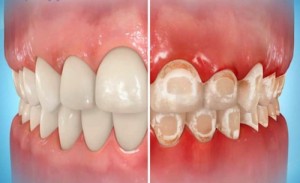Beware of dangerous trend Thank you to all our patients
DO YOU GAG EASILY AND DISLIKE THOSE MESSY IMPRESSIONS? No problem with our new 3M™ True Definition Scanner! Putting all that goop in your mouth to get an impression is SO yesterday!
Today, our practice uses leading-edge 3M™ technology to quickly capture a 3D “impression” or model of your teeth that helps us produce better-fitting appliances like clear aligners, brackets, wires, and retainers.
How Does It Work?
We simply move the scanner around the area being treated, capturing video of all sides of the teeth and gums. You can watch the 3D model of your teeth appear on the monitor in real time.
When the scan is complete, we can review, zoom in or out, and rotate the image to get a true picture of your oral anatomy. It’s a great opportunity for you to ask questions and better understand what’s being done.
How Is The Scan Used?
The digital impression is often sent to a dental laboratory to produce the appliance or aligner.
Once the appliance or aligner is complete, we will deliver and review comfort for daily wear. If we have prescribed clear movement aligners, we will insert the first set of aligners and review your custom treatment plan with you.
Accurate. Fast. Comfortable.
The tiny scanning wand makes taking the impression fast and comfortable, with amazingly precise results. Better impression accuracy means optimal fitting, and more beautiful, better-functioning dental appliances for you, our valued patient!
Ask Us About Our 3M™ True Definition Scanner
Next time you visit our practice, ask us about this fantastic technology. We’d love to show you how it works, and answer all of your questions.
Thanks for being our valued patient and friend!



